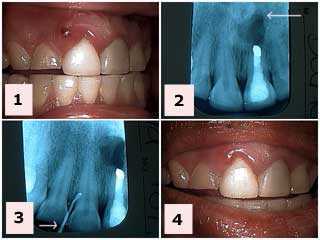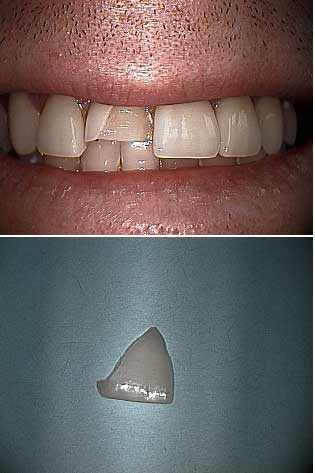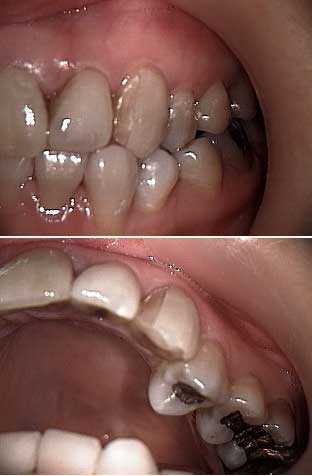Before and after photos on how to fix problems with porcelain veneers performed in our Porcelain Veneers office.


Acute periodontal gum abscess that caused gum pain. Close-up pictures of the gums. This patient presented with a fistula – gum boil – between teeth #’s 7 & 8. Teeth #’s 8 & 9 had acrylic veneers placed elsewhere about two years ago. Her general dentist had performed a gingivectomy last year to attempt to treat the occasional swelling of the gum in this same area. A gutta percha point was placed in the fistula and radiographed to see where it lead. It stayed at the coronal gingiva the margin of the veneer. The patient was put on tetracycline antibiotics for a week. Reevaluation two days later by the Periodontist showed improvement in gum pain symptoms and gingival inflammation. The acrylic veneer gum margins will be recontoured – reshaped – following resolution of the acute condition.
Lumineers were not used in this case but it is a good place for discussion. Lumineers are heavily advertised as being good because there is little or no teeth drilling involved. The lack of teeth preparation – drilling – may result in bulky thick porcelain teeth. The porcelain is also made differently. Lumineers may be easier for a dentist but we do not offer Lumineers for the reasons stated above.


Porcelain tooth veneer failure on an upper left canine. Notice the edge-to-edge occlusion bite in this area and that the original dental veneer did not wrap around to the palatal surface of the tooth.
Some teeth veneer cases involve an attempt to improve the occlusion bite like seen in these pictures. This can create unfavorable vectors of force that will create sheer stresses on the porcelain veneer cement. In these cases the teeth preparation – drilling – should be more aggressive to create some mechanical retention to aid the bond strength of the dental cement.